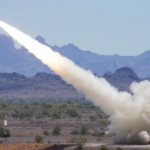
The Army will hold an industry day before the end of the year to find new “smart” capabilities for bases in the face of growing drone and information warfare threats aimed at installations, officials told reporters Monday.Army TRADOC’s latest Mad Scientist conference held last month at the Georgia Tech Research Institute in Atlanta focused on future threats to Army installations, with officials now planning to develop formal proposals for critical sensor capabilities and microgrid projects aimed at non-traditional defense partners.“There…

 By
By 











